What Is Curry?
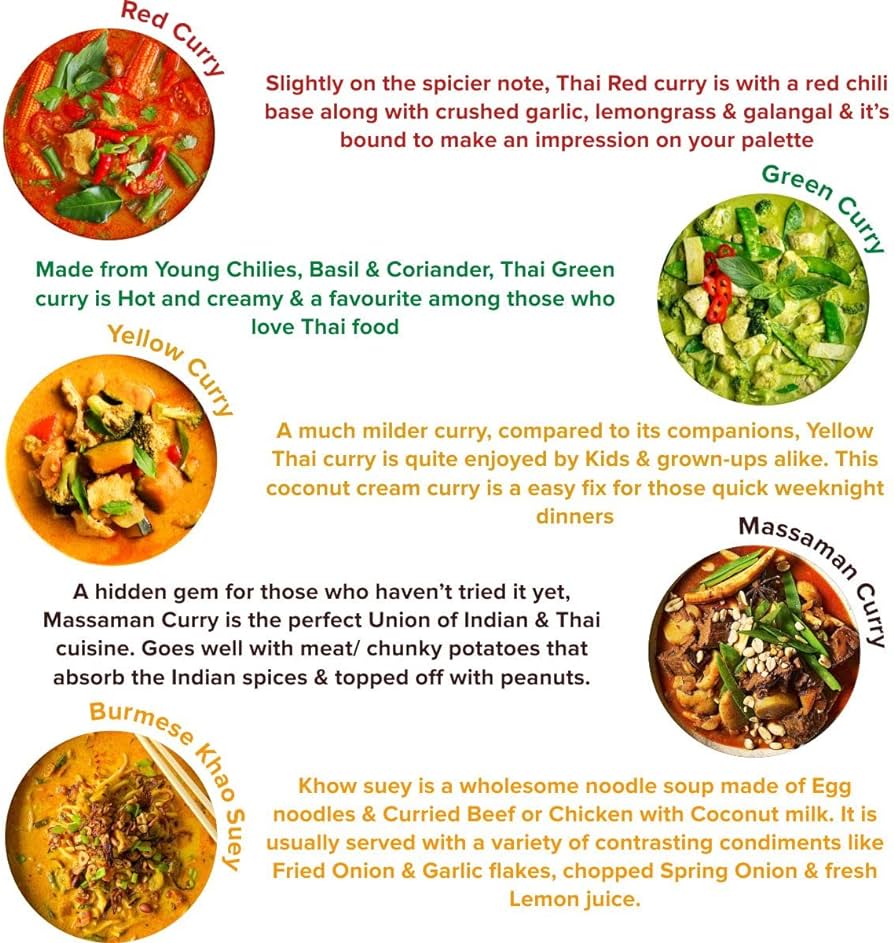
Curry is a popular dish that originated in South Asia and has since spread to various parts of the world. It is a flavorful and aromatic dish that typically consists of a combination of spices, herbs, and often a sauce or gravy base. The exact ingredients and preparation method can vary depending on the region and the type of curry being made. Curries can range from mild to highly spicy and can be made with a variety of meats, vegetables, or even tofu. It is a versatile dish that is enjoyed by many for its rich flavors and diversity of ingredients.
Introduction To Curry And Its Origins
Curry is a beloved sauce that has gained popularity worldwide. Originating in India, curry has a rich history that dates back centuries. It is believed that the word “curry” is derived from the Tamil word “kari,” which means sauce. Indian curry is known for its bold flavors, aromatic spices, and vibrant colors. Over time, curry has spread to other parts of Asia and the rest of the world, adapting to various regional cuisines and giving rise to different curry varieties such as Thai curry. Today, curry continues to be cherished for its versatility and ability to tantalize the taste buds.
Common Ingredients In Curry Dishes
Curry dishes are known for their complex flavors and aromatic spices. While the specific ingredients may vary depending on the region and recipe, there are some common elements found in many curry dishes. These include:
- Curry paste: A blend of spices, herbs, and chili peppers that forms the base of the curry sauce.
- Aromatic spices: Common spices used include cumin, coriander, turmeric, cardamom, and cinnamon.
- Fresh herbs: Popular herbs used include cilantro, basil, lemongrass, and kaffir lime leaves.
- Coconut milk: Provides creaminess and richness to the curry sauce.
- Protein: Common proteins used include chicken, beef, shrimp, and tofu.
- Vegetables: Veggies like onions, bell peppers, carrots, and potatoes are often included.
These ingredients come together harmoniously to create the flavorful and comforting curry dishes enjoyed around the world.
Red Curry Overview
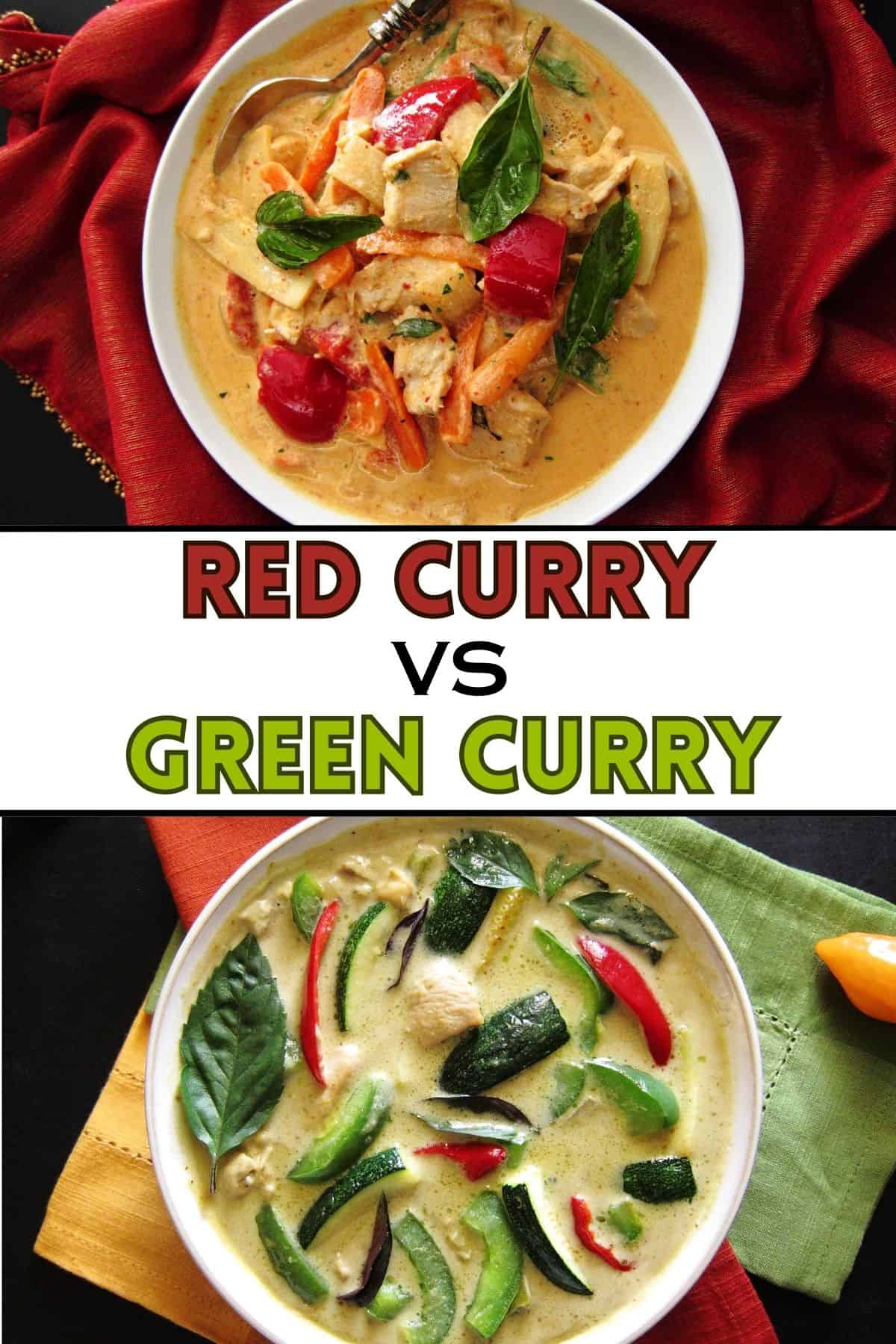
Red curry is a popular Thai curry known for its rich and spicy flavor. It gets its vibrant red color from the red chili peppers used in the curry paste. The paste is made by grinding together a combination of aromatic spices such as cumin, coriander, and cardamom. Coconut milk is then added to create a creamy and luscious sauce. Red curry is often made with proteins like chicken, beef, or shrimp, and is typically served with steamed rice or noodles. It’s a fiery and flavorful dish that packs a punch.
Flavor Profile And Ingredients Of Red Curry
Red curry is known for its rich and spicy flavor. The combination of red chili peppers, aromatic spices like cumin, coriander, and cardamom, along with the creamy texture of coconut milk, creates a complex and robust taste. The heat level of red curry can vary, but it generally offers a fiery kick. The key ingredients in red curry include red chili peppers, garlic, shallots, lemongrass, ginger, and shrimp paste. These ingredients come together to create a flavorful and aromatic curry that is loved for its bold taste.
Popular Dishes Made With Red Curry
Popular dishes made with red curry include red curry chicken, red curry beef, and red curry shrimp. These dishes are often served with steamed jasmine rice or noodles. The rich and spicy flavors of red curry complement the tender meat or succulent shrimp perfectly. Red curry is also commonly used in vegetarian dishes, such as red curry tofu or red curry vegetables. Its versatility makes it a popular choice in Thai cuisine, and its bold flavors are sure to satisfy any curry lover’s cravings.
Yellow Curry Overview
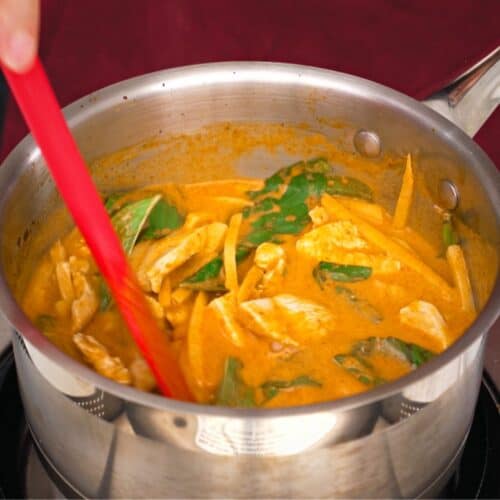
Yellow curry is a vibrant and flavorful curry variety originating from Thailand. Known for its mild yet aromatic taste, yellow curry gets its signature color from turmeric and often includes other spices like cumin and coriander. The main ingredients used in yellow curry include coconut milk, lemongrass, galangal, and kaffir lime leaves, which give it a distinct citrusy flavor. Yellow curry is commonly paired with chicken, seafood, or vegetables, making it a versatile option for various dishes. Its creamy texture and subtle spiciness make it a popular choice for those looking for a flavorful but milder curry experience.
Characteristics And Key Ingredients Of Yellow Curry
Yellow curry is known for its vibrant color and mild yet aromatic flavor. The key ingredients that give yellow curry its distinct taste include turmeric, cumin, coriander, lemongrass, galangal, and kaffir lime leaves. These ingredients create a unique blend of citrusy and earthy flavors with a hint of spiciness. Yellow curry is typically creamy in texture, thanks to the addition of coconut milk. It pairs well with chicken, seafood, or vegetables, making it a versatile choice for a variety of dishes. Its mild spice level and delightful flavors make it a popular curry option for those looking for a balanced and flavorful meal.
Regional Variations Of Yellow Curry Dishes
Regional variations of yellow curry dishes exist across different countries and regions. In Thai cuisine, yellow curry is commonly known as “Gaeng Karee” and is a popular choice for traditional Thai curries. In Indian cuisine, yellow curry is often referred to as “Korma” and is made with a blend of spices and yogurt. Malaysian cuisine also has its own version of yellow curry called “Kari Kuning,” which includes ingredients such as turmeric, lemongrass, and coconut milk. Each regional variation brings its own unique flavors and ingredients to the yellow curry, making it a versatile and diverse dish.
Key Differences Between Red And Yellow Curry
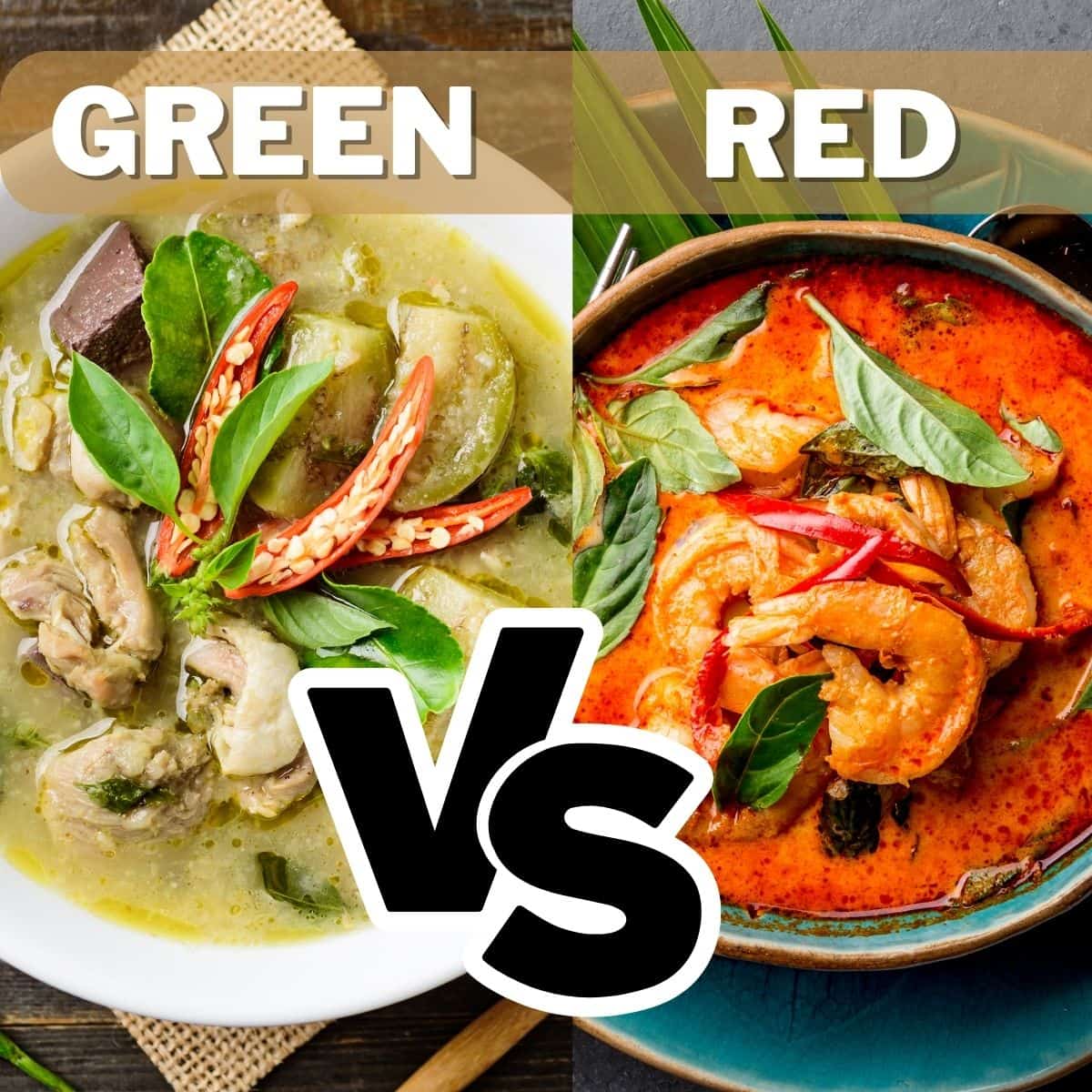
Red curry and yellow curry have distinct differences in terms of spice level, color, flavor, and aroma. The main difference lies in the type of chilies used. Red curry is made with red chilies, giving it a fiery and bold flavor, while yellow curry gets its color from turmeric and is milder in spice. Yellow curry has a creamy and aromatic taste, thanks to the addition of coconut milk and turmeric. Additionally, red curry tends to have a reddish-brown color, while yellow curry has a vibrant yellow hue. These differences make each curry variety unique and suitable for different taste preferences.
Spice Level And Heat Factor Comparison
When it comes to spice level and heat factor, red curry definitely takes the lead. Made with red chilies, it packs a fiery punch that can bring tears to your eyes and leave your taste buds tingling. On the other hand, yellow curry is known for being milder in spice. It incorporates a blend of aromatic spices, including turmeric, which gives it a warm and flavorful taste without overwhelming heat. So, if you’re a fan of bold and intense flavors, red curry is the way to go. But if you prefer a more subtle and gentle heat, yellow curry is your best bet.
Variations In Color, Flavor, And Aroma
Red curry and yellow curry differ not only in spice level but also in color, flavor, and aroma. Red curry has a rich red color due to the red chilies used in its preparation. It has a complex and intense flavor, with notes of spiciness and a hint of sweetness. The aroma is bold and pungent, with a strong presence of spices and herbs. On the other hand, yellow curry has a vibrant yellow color from the turmeric and other aromatic spices. It has a milder and more gentle flavor, with a subtle warmth and a creamy undertone. The aroma of yellow curry is fragrant and aromatic, with a delicate balance of spices and herbs.
Cooking With Red And Yellow Curry
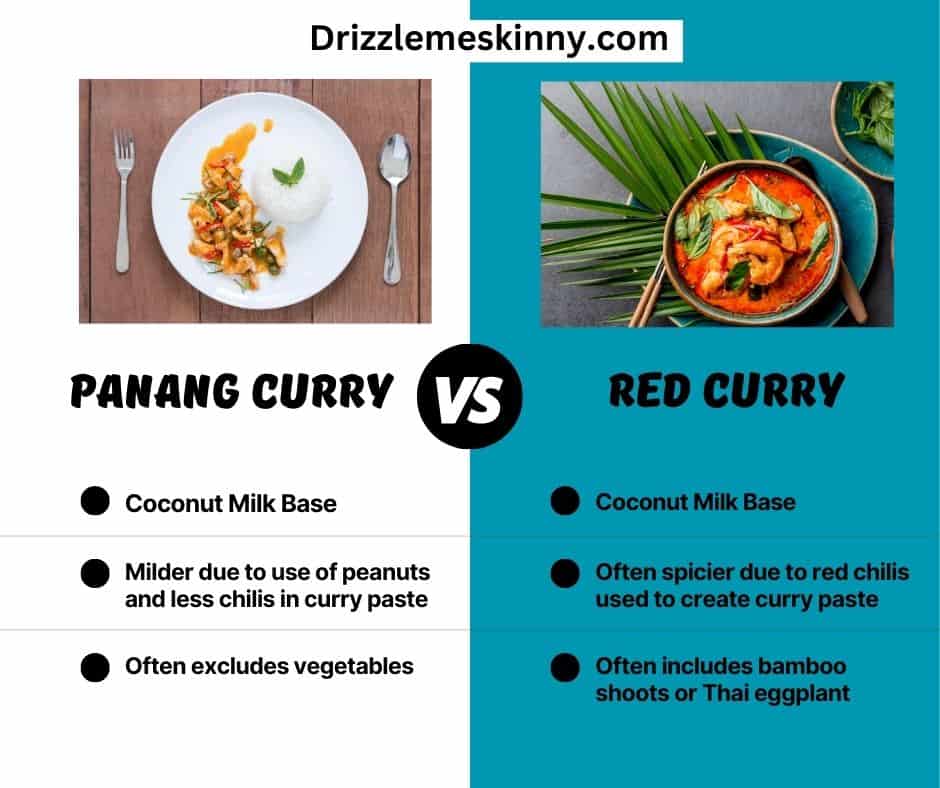
When it comes to cooking with red and yellow curry, there are a few key tips to keep in mind.
For red curry, it is important to balance its spiciness with other ingredients. Add coconut milk or broth to mellow out the heat and enhance the creamy texture. Red curry pairs well with meat such as chicken, beef, or shrimp, as well as vegetables like bell peppers and bamboo shoots.
Yellow curry, on the other hand, has a milder flavor that is enhanced by the addition of coconut milk. It is commonly used with chicken, potatoes, and onions. You can also add crushed peanuts or cashews for an extra crunch.
Both red and yellow curry can be used in stir-fries, soups, or curries. The key is to experiment with different ingredients and find the flavors that you enjoy the most.
Tips For Using Red Curry In Recipes
- Adjust the amount of red curry paste based on your spice preference. Start with a small amount and gradually add more if desired.
- Use coconut milk or broth to balance the spiciness of red curry and enhance its creamy texture.
- Red curry pairs well with meats such as chicken, beef, or shrimp. You can also add vegetables like bell peppers, bamboo shoots, or Thai eggplants.
- Experiment with different ingredients to create unique dishes. Try adding pineapple for a touch of sweetness or lime juice for a tangy twist.
- Remember to taste and adjust the flavors as you cook. Red curry can be versatile, so don’t be afraid to get creative and tailor it to your personal taste.
Creative Ways To Incorporate Yellow Curry Into Dishes
Yellow curry can add a burst of flavor to a variety of dishes. Here are some creative ways to incorporate yellow curry into your recipes:
- Coconut Curry Soup: Use yellow curry as a base for a creamy and aromatic coconut curry soup. Add vegetables, protein, and noodles for a complete and satisfying meal.
- Curry Deviled Eggs: Add a twist to traditional deviled eggs by incorporating yellow curry into the filling. The curry adds a subtle warmth and complexity to this classic appetizer.
- Curry Roasted Vegetables: Toss your favorite vegetables in a mixture of yellow curry, olive oil, and salt. Roast them in the oven until they are tender and caramelized for a delicious side dish or vegetarian main.
- Curry Dressing: Whisk yellow curry into a homemade vinaigrette or dressing to elevate your salads. The curry adds a unique depth of flavor and pairs well with leafy greens, fruits, and nuts.
- Curry Tofu Stir-Fry: Marinate tofu in a blend of yellow curry, soy sauce, and lime juice before stir-frying with vegetables. The result is a flavorful and protein-packed dish that is perfect for vegetarians and meat-lovers alike.
Remember to adjust the amount of yellow curry paste based on your preference for spiciness. Be adventurous and experiment with different ingredients to create your own unique dishes using yellow curry.
Conclusion

In conclusion, red curry and yellow curry may both be delicious curry varieties, but they have distinct differences in terms of flavor, spice level, and color. Red curry is known for its spiciness and vibrant red color, while yellow curry offers a milder taste with a beautiful yellow hue. Understanding these differences allows you to choose the curry that best suits your taste preferences. Whether you prefer the fiery kick of red curry or the subtle warmth of yellow curry, both varieties offer a world of culinary possibilities to explore and enjoy. So go ahead and experiment with these flavorful curries to add a touch of exoticism to your meals.
Summary Of Differences Between Red And Yellow Curry
Red curry and yellow curry have distinct differences in flavor, spice level, and color. Red curry is known for its spiciness and vibrant red color, while yellow curry offers a milder taste with a beautiful yellow hue. Red curry is typically made with red chilies, giving it a fiery kick, while yellow curry is made with milder spices like turmeric. These variations in flavor and heat make red curry more suitable for those who prefer bold and spicy flavors, while yellow curry is a great choice for those who enjoy a milder and aromatic taste.
Recommended Dishes To Try With Each Curry Variety
When it comes to red curry, some popular dishes to try are Red Curry Chicken, Red Curry Shrimp, and Red Curry with Vegetables. These dishes highlight the bold and spicy flavors of red curry, creating a satisfying and fiery culinary experience.
For yellow curry, some recommended dishes include Yellow Curry with Chicken, Yellow Curry with Tofu, and Yellow Curry with Potatoes and Carrots. The milder and aromatic flavors of yellow curry complement these ingredients perfectly, resulting in a comforting and flavorful meal.
No matter which curry variety you choose, be sure to pair it with steamed jasmine rice or fresh naan bread for a complete and delicious Thai dining experience.
FAQ About Red Curry Vs Yellow Curry: Understanding Curry Varieties
Q: What is the main difference between Red Curry and Yellow Curry?
A: The main difference lies in the color and flavor profile. Red Curry is spicier and has a dominant taste of red chili peppers, while Yellow Curry is milder with a subtle taste of turmeric and cumin.
Q: Which ingredients give Red Curry its distinctive color and flavor?
A: Red Curry gets its color and flavor from ingredients like red chili peppers, lemongrass, galangal, garlic, shallots, and shrimp paste.
Q: What are the key ingredients that contribute to the flavor of Yellow Curry?
A: Turmeric, cumin, coriander, and other aromatic spices give Yellow Curry its unique taste and yellow hue.
Q: Can the spiciness level be adjusted in Red Curry and Yellow Curry?
A: Yes, the spiciness level can be adjusted by varying the amount of chili peppers or using milder varieties. Red Curry tends to be inherently spicier than Yellow Curry.
Q: Are there specific dishes that are traditionally made using Red Curry or Yellow Curry?
A: Red Curry is commonly used in dishes like Thai Red Curry Chicken or Beef, while Yellow Curry is often featured in dishes like Thai Yellow Curry with Potatoes and Chicken.
Q: Are there regional differences in the use of Red Curry and Yellow Curry?
A: Yes, regional variations exist where Red Curry is more prevalent in central and southern Thailand, while Yellow Curry is popular in southern Thailand and parts of Malaysia and Indonesia.

Madame Thai Cuisine is not just a restaurant; it’s a culinary journey through Thailand’s vibrant and diverse flavors. Our story began with a passion for sharing the authentic tastes of Thailand with the world. Situated in the heart of [location], Madame Thai Cuisine has been a beacon of Thai culinary excellence since [year of establishment]. Our commitment to using only the finest and freshest ingredients, combined with traditional cooking techniques, has earned us a reputation as a go-to destination for exquisite Thai dining.